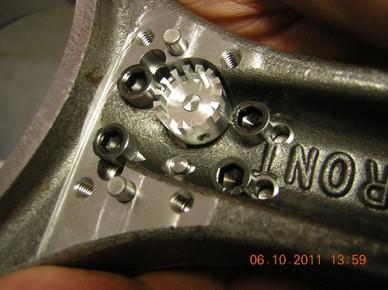
The Need for New Measurement Capabilities
In the complicated matrix of oil flow passages in a diesel engine, little is typically known about the actual oil flow through different passages within the crankshaft and connecting rods. Typically, oil pressure in the main block gallery is monitored, and assumptions are made that the flow is sufficient to the bearings. These flows are critical to the lubrication of crankshaft main bearings, rod journal bearings, and piston pin bearings.
The oil flow through a connecting rod for a diesel piston is a good example, since the development engineers need to know how well the piston pin is being lubricated. In many applications, it is intended that the pin will rotate freely inside the connecting rod and piston pin bore. The presence of continuous oil flow up the connecting rod to the pin is critical for this to be achieved.
IR Telemetrics Oil Flow Transducer
To better understand the actual flow rates occurring, IR Telemetrics has developed their own unique flow transducer that can be installed in crankshafts, and connecting rods, to accurately measure oil flow at various engine speeds, load conditions, and oil sump temperatures. This transducer, combined with IRT’s inductively powered wireless transmitter installed on the crankshaft or connecting rod, gives engineers real time oil flow data during their engine testing.
A “Pump Body” is machined into the connecting rod along the drilling in which oil is pumped up through the rod utilizing engine oil pressure. A gear rotor, which is a positive displacement transducer, is installed within the pump body. The oil flowing through the rod turns the gear rotor. IRT then uses their Rotation Sensor to measure the rotation of the gear rotor, and that rotation data is transmitted wirelessly off the rod with a wireless transmitter to receiving antennas mounted in the engine block. As part of the data acquisition software, the rotation data is converted into oil flow through a calibration equation. This transducer measures flow rate, direction of flow, and quantity of flow.
This measurement is often taken simultaneously with an oil pressure measurement inside the rod using a miniature piezo resistive pressure transducer and a second microwave transmitter. This gives engineers simultaneous real-time data of the critical characteristics occurring within the rod and rod/pin joint.
This technique can also be used on crankshafts and many other rotating machinery components to measure oil flow through small oil passages on rotating and reciprocating components, and on stationary components.
Contact IR Telemetrics to learn more today!